Photos/Reviews: THE QUEEN OF SPADES at the Metropolitan Opera, New York
Tchaikovsky's eerie thriller of imperial Russia has its first performances at the Met since 2011. Tenor Yusif Eyvazov is Hermann, the fanatical gambler whose obsession with a powerful secret drives him to madness. Soprano Lise Davidsen makes her highly anticipated Met debut as his long-suffering lover, Lisa, with mezzo-soprano Larissa Diadkova as the otherworldly Countess. Baritone Igor Golovatenko is Yeletsky, baritone Alexey Markov is Tomsky, and Vasily Petrenko conducts.
World Premiere: Mariinsky Theater, St. Petersburg, 1890. A work of extreme moods and colors, The Queen of Spades explores life's frivolities as well as the darkest impulses of obsession, addiction, madness, and self-destruction. The gripping plot is set against the vast elegance and macabre allure of St. Petersburg, which functions almost as a character itself. Tchaikovsky's lyric mastery is equally apparent throughout the whole of this remarkable score, which moves deftly from the most elegant to the most harrowing situations.
Tchaikovsky's skills as a great symphonist and undisputed master of the ballet are apparent in the many superb orchestral touches throughout this opera's score. The opera's great vocal solos, most of them considered concert standards in Russia, are excellent surprises for American audiences, and notable for their diversity. Ensembles punctuate the work at key moments of interaction-most notably in the first scene's quintet, in which each of the drama's lead characters expresses fear of another character.
Let's see what the critics have to say!
Zachary Woolfe, NY Times: Her [Lise Davidsen's] restrained yet exciting performance was matched by that of the conductor Vasily Petrenko, also making his Met debut and leading a refined, properly aristocratic performance of an opera that can be exaggerated almost into Grand Guignol. This wasn't the most viscerally thrilling interpretation, but it was effective, building steadily in fervor.
Richard Sasanow, BroadwayWorld: The only thing I might have wished for was that the opera was...shorter. As in many works, the dancing, while well executed and beautifully written by Tchaikovsky, did nothing to move the story forward--particularly important where tension is a key aspect--except for the opportunity for Hermann to get the key to the Countess's apartment from Lisa. Here, in particular, the pastorale, well staged as it was by choreographer John Meehan, brought the opera to a (long) halt for me, at least.
James Jorden, Observer: In the title role of the elderly countess with a mysterious system for winning at gambling, veteran mezzo Larissa Diadkova seemed a bit flummoxed by the production's concept of the character as an over the top "Norma Desmond" diva. She wore her outré wardrobe of feathered and beaded gowns dutifully, but sang with simple dignity in a burnished chest register. The large cast included two leading baritones, both luxuriously cast. Alexey Markov flung out the high notes of Tomsky's ballad with disdainful ease, and debuting Igor Golovatenko traced the flowing lines of Prince Yeletsky's love song with delicate good taste.
Eric C. Simpson, NY Classical Review: Larissa Diadkova brought a veteran's confidence in her vivid performance as the Countess, the title's "Queen of Spades." She was a towering presence on the stage, coming on in a parade of Disney-villain dresses and immediately cowing anyone who so much as looked at her. Her mezzo-soprano showed a bony toughness that suited her character's steely edge.
Clive Paget, Limelight Magazine: Moshinsky's staging places these multiple-locations in Mark Thompson's picture framed box, whose skewed perspective heightens the sense of Hermann's mounting mental breakdown. Paul Pyant's lighting too is suitably atmospheric. Handsomely observed period costumes - we are at the end of the reign of Catherine the Great, who makes a dramatically unnecessary appearance at one point - are subtly toned to complement each scene: blacks, whites and greys against a startling blue sky for the park scene, golds and creams for the ball. It's certainly eye-catching, though the formality of the frocks sometimes works against the interior passion of the main storyline, and on a couple of occasions singers go through motions whose intentions, in Peter McClintock's revival staging, are not as clear as once they might have been.
Check out photos of the cast in action below!
Photos: Ken Howard / Met Opera
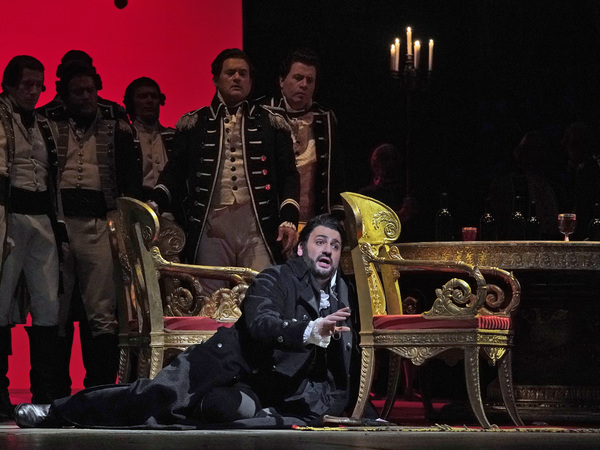

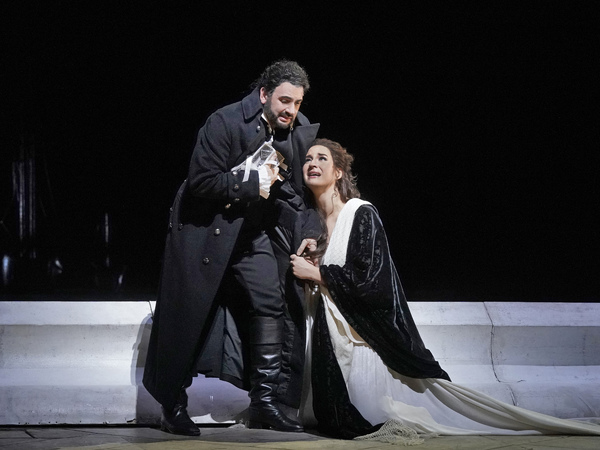
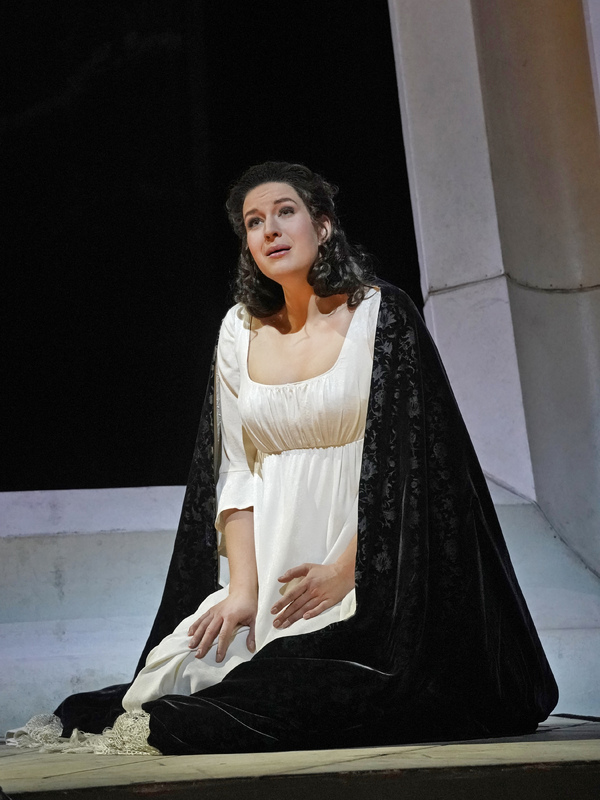

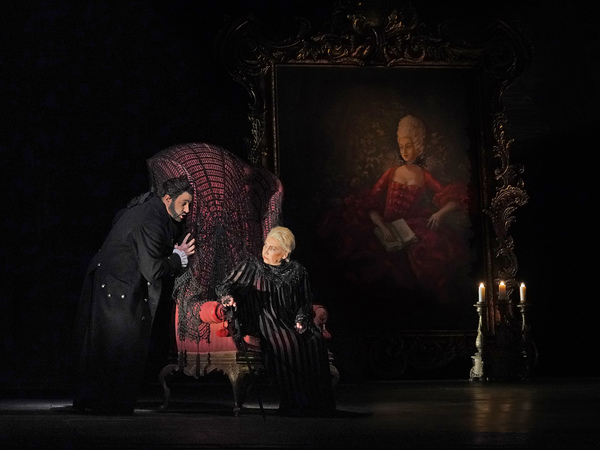
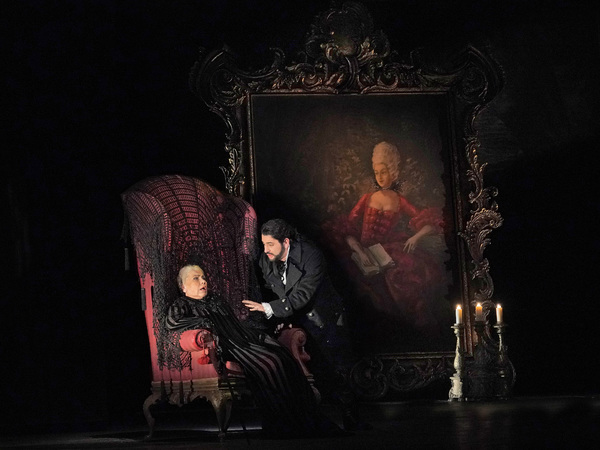

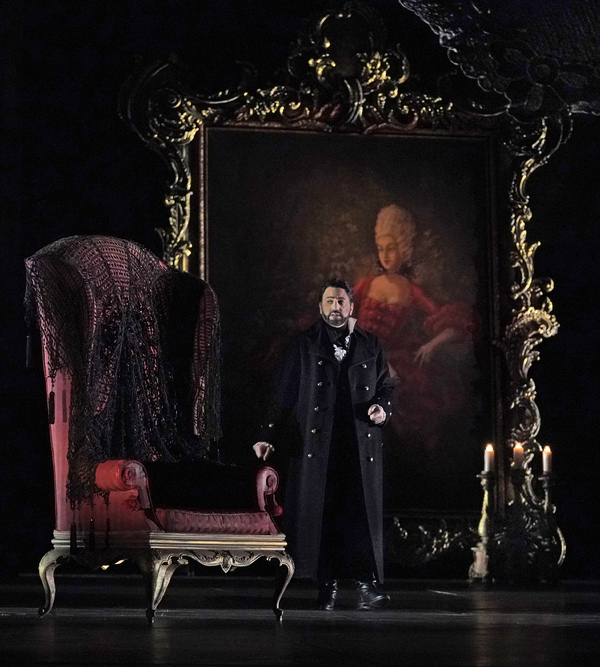

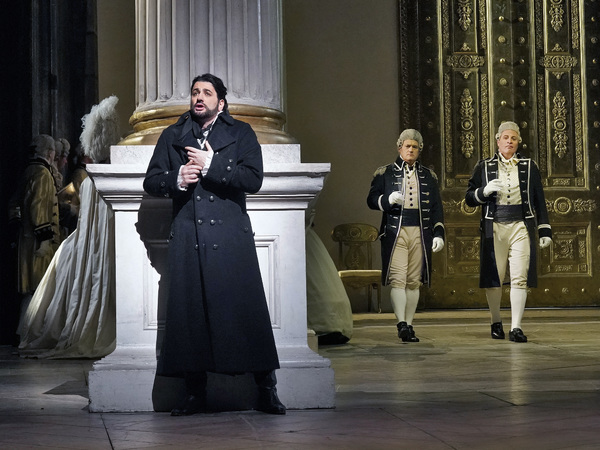


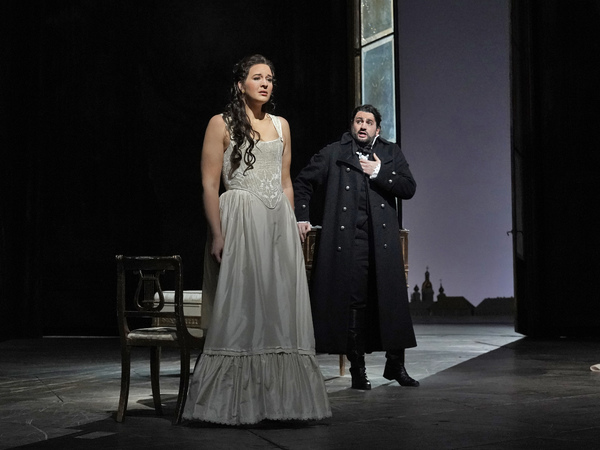
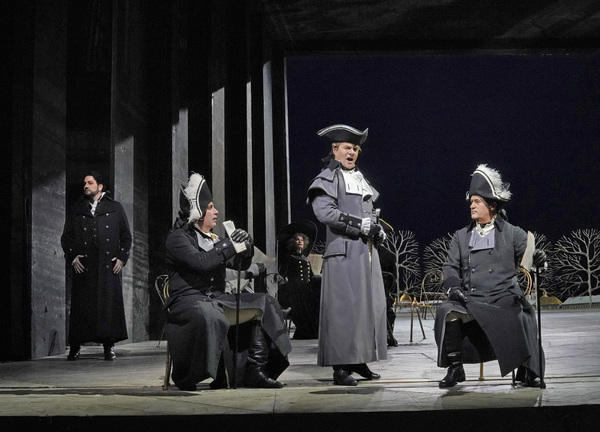
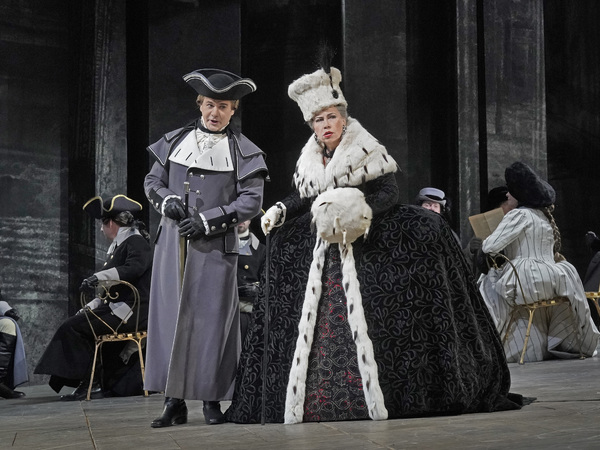
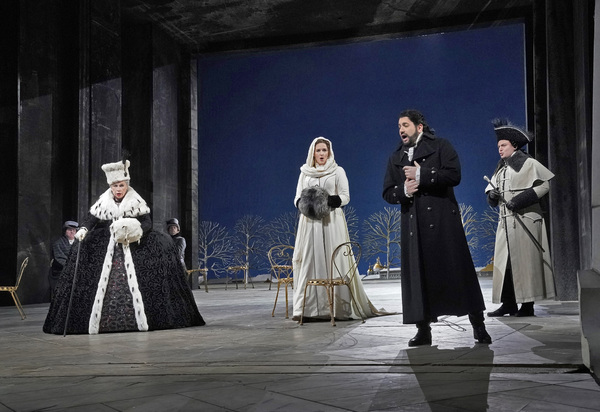
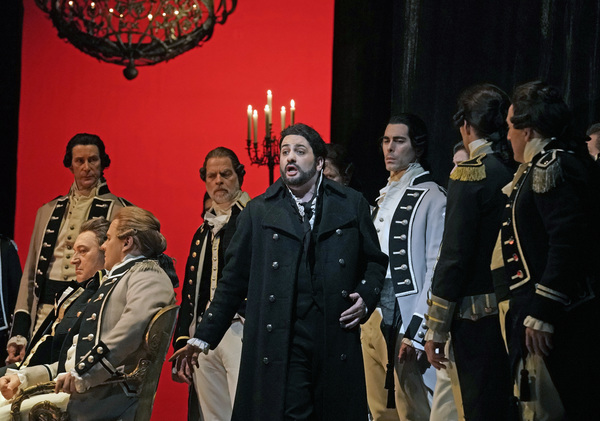
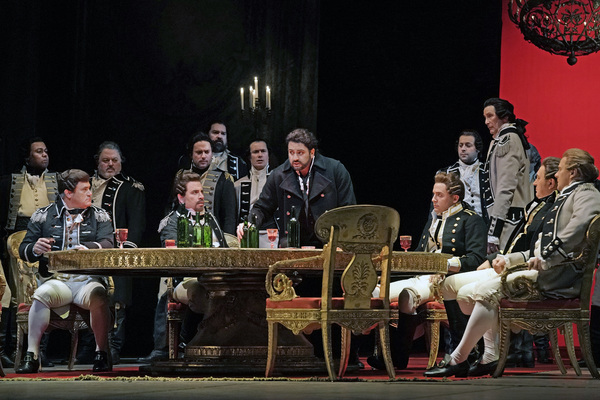
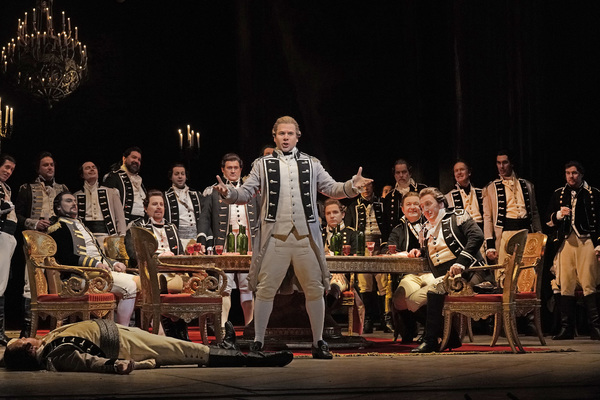
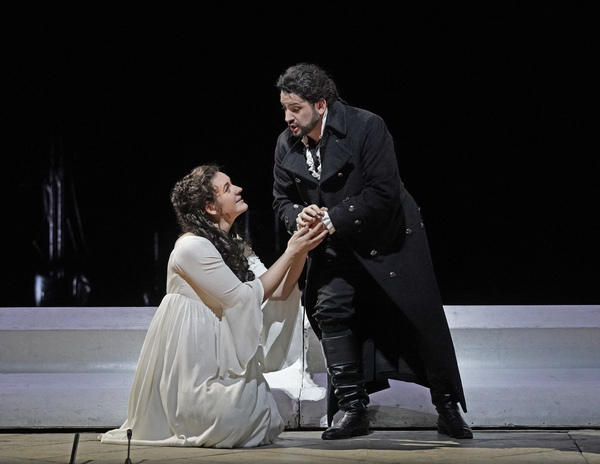
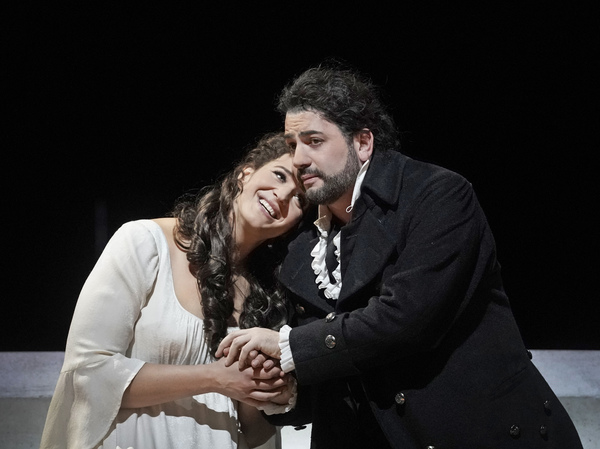

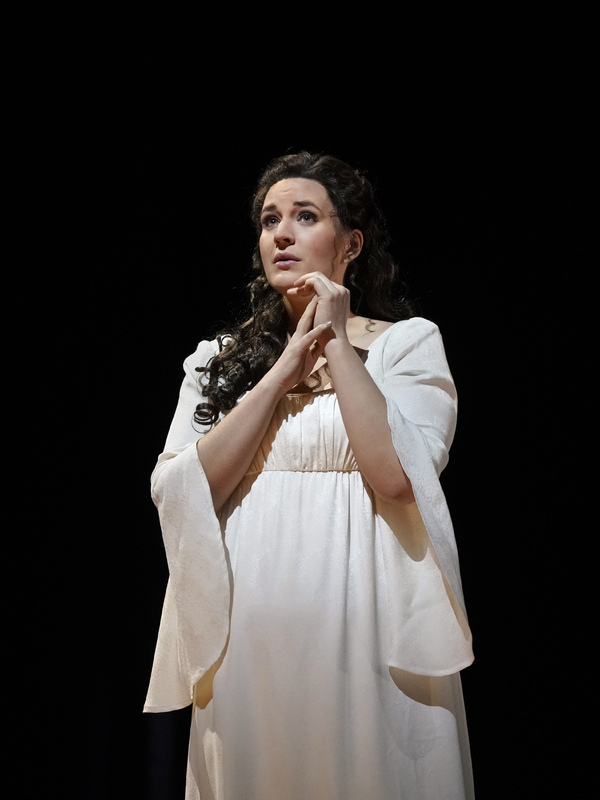
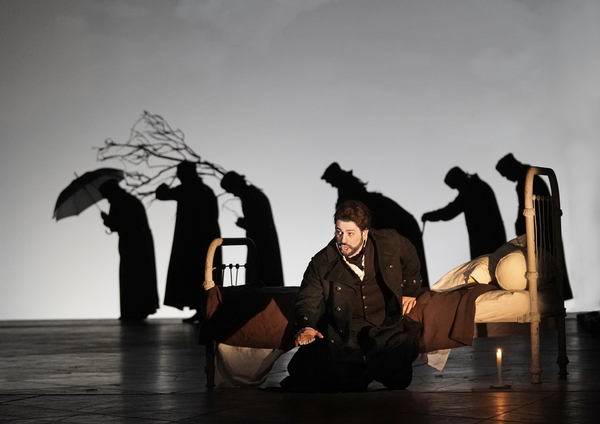

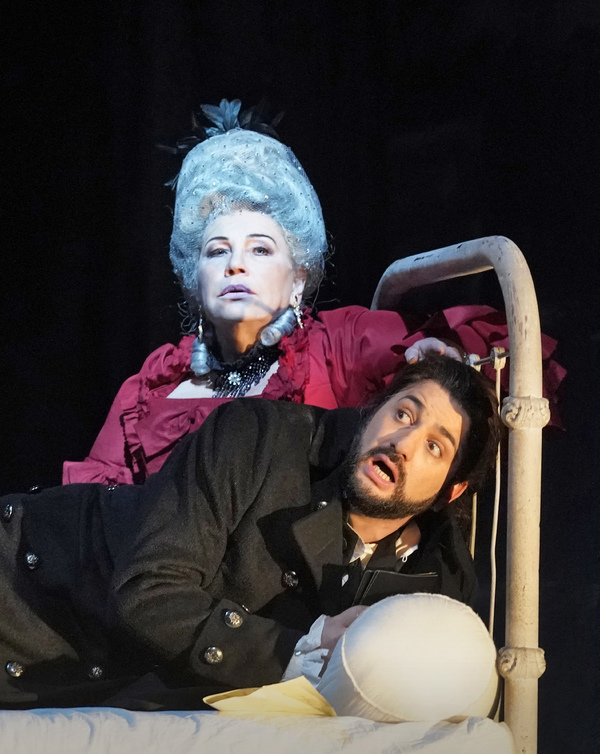
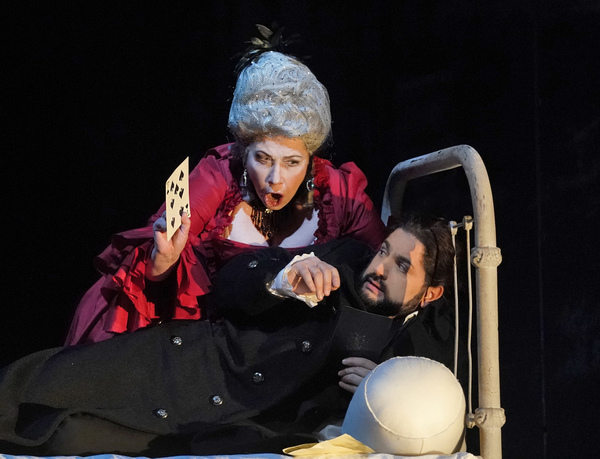
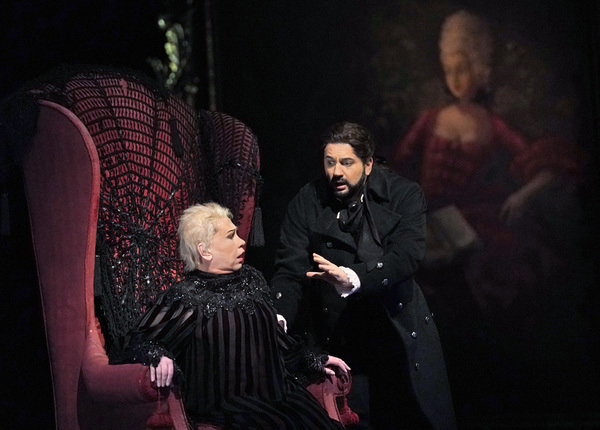
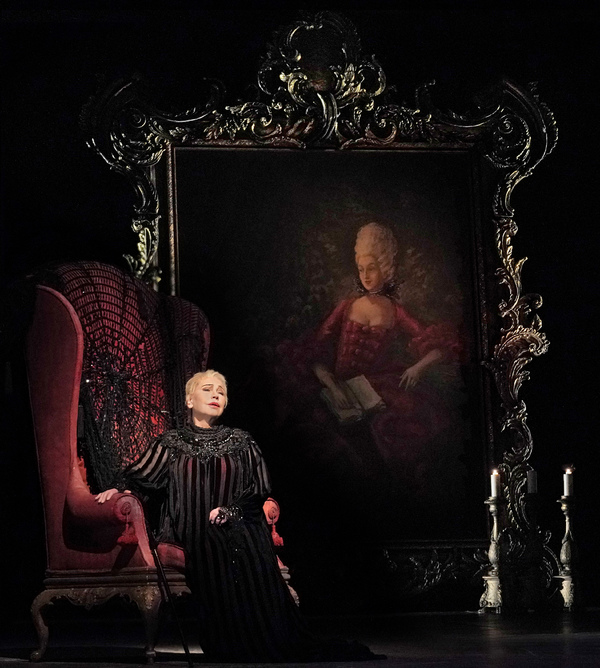
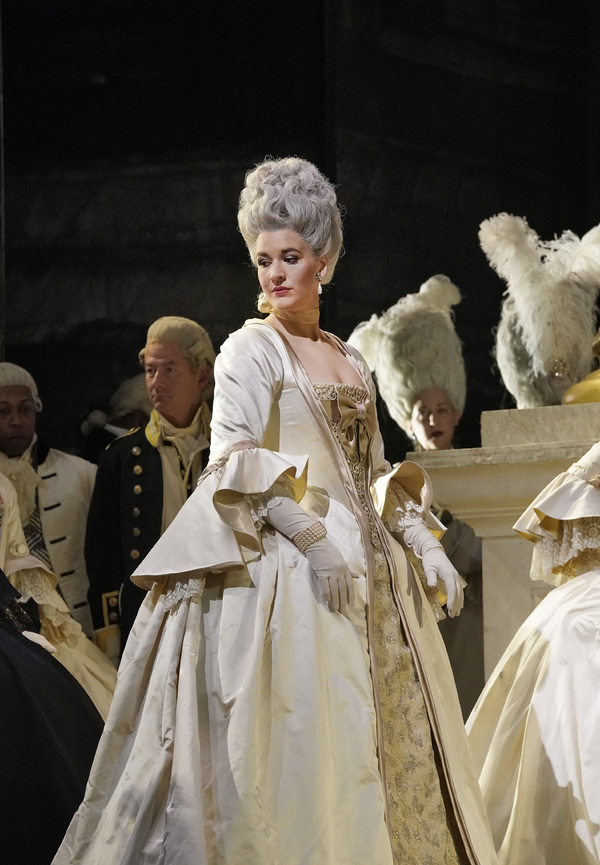
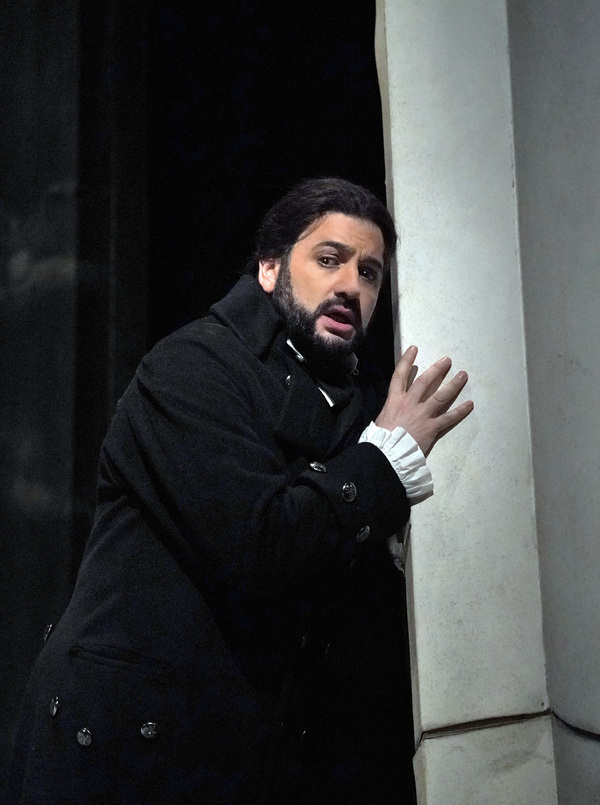
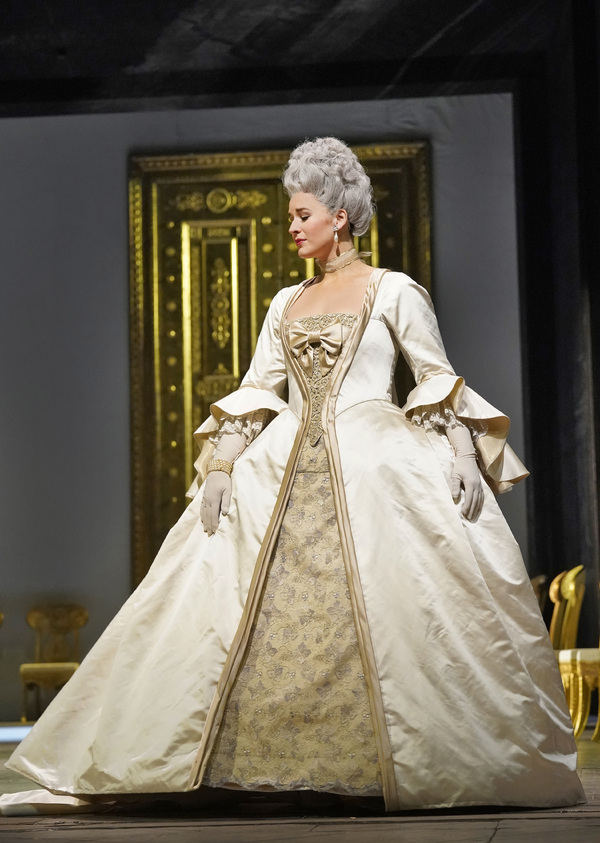
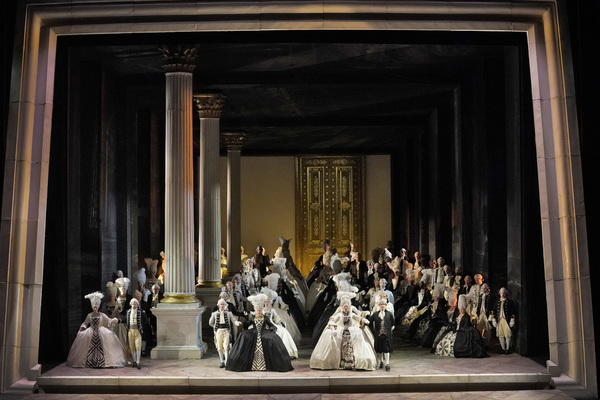
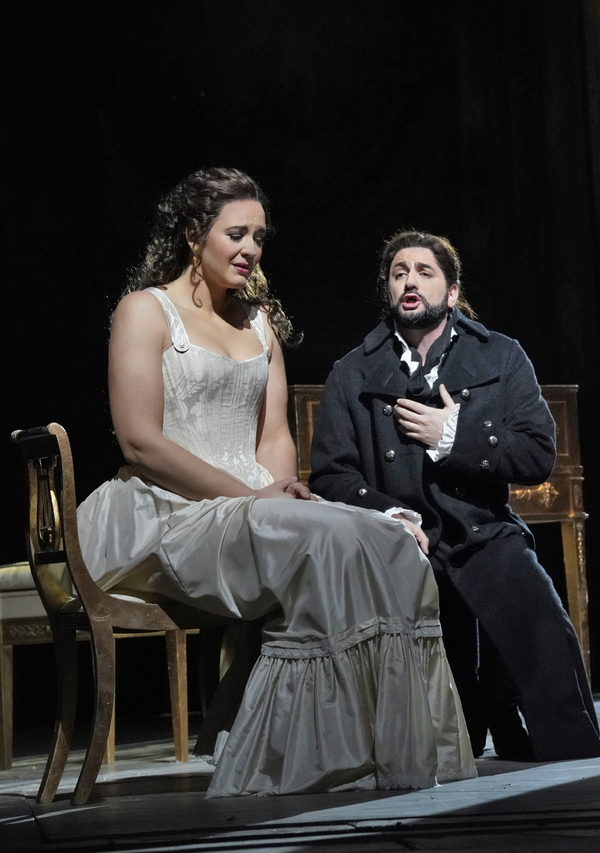

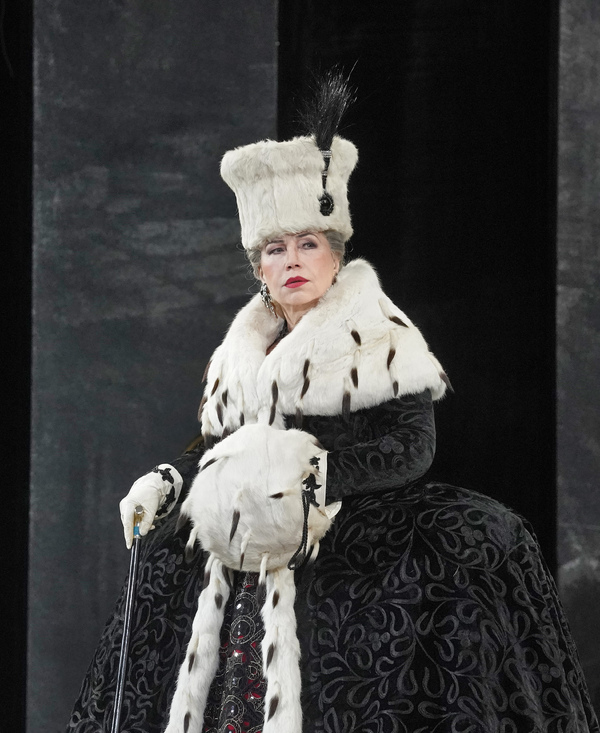
Reader Reviews
Videos

